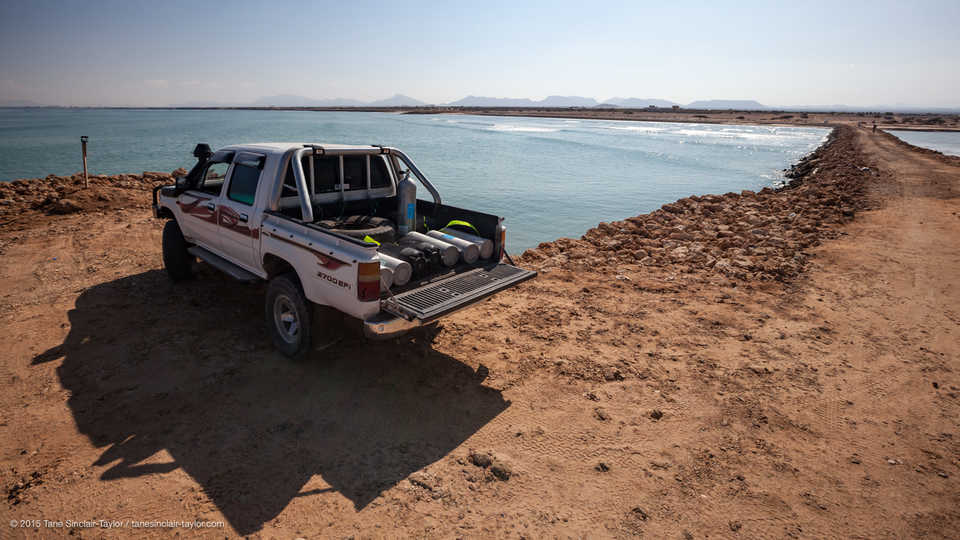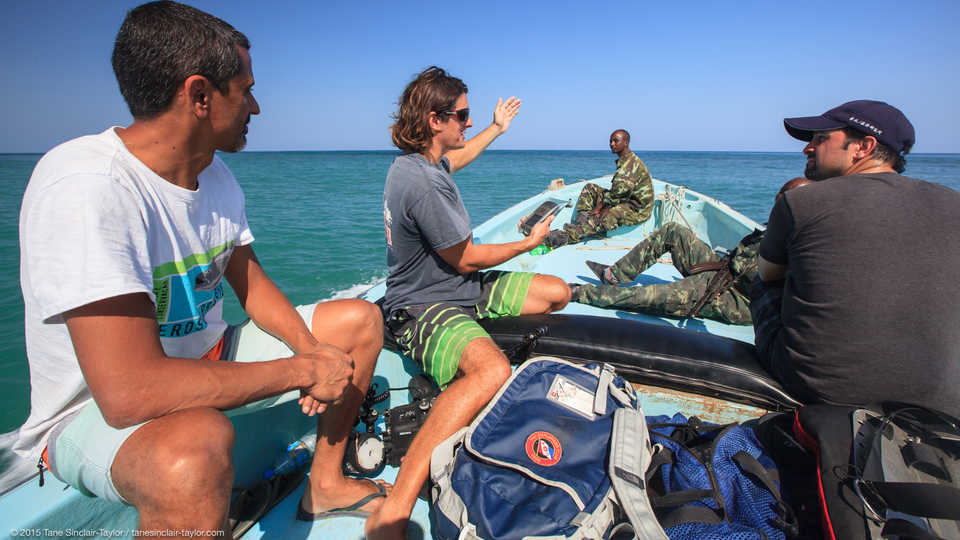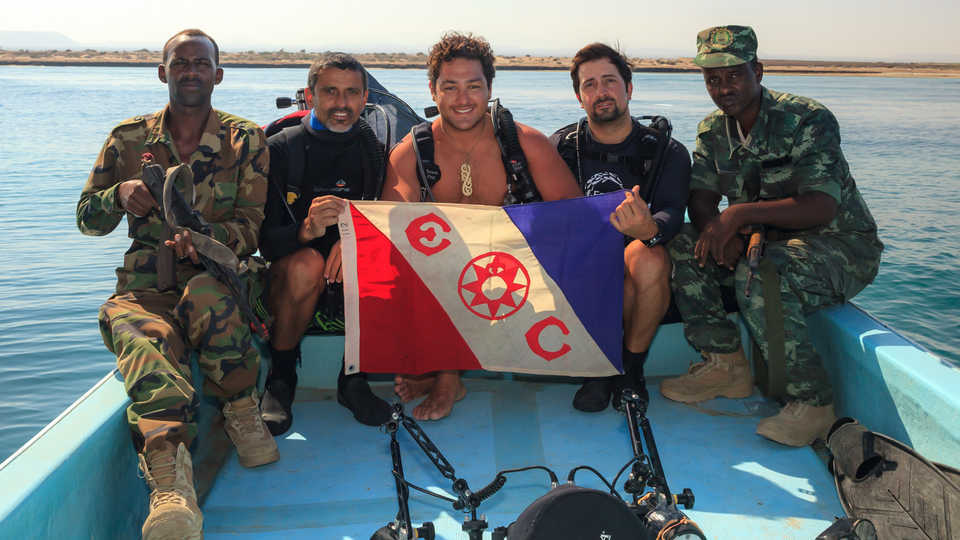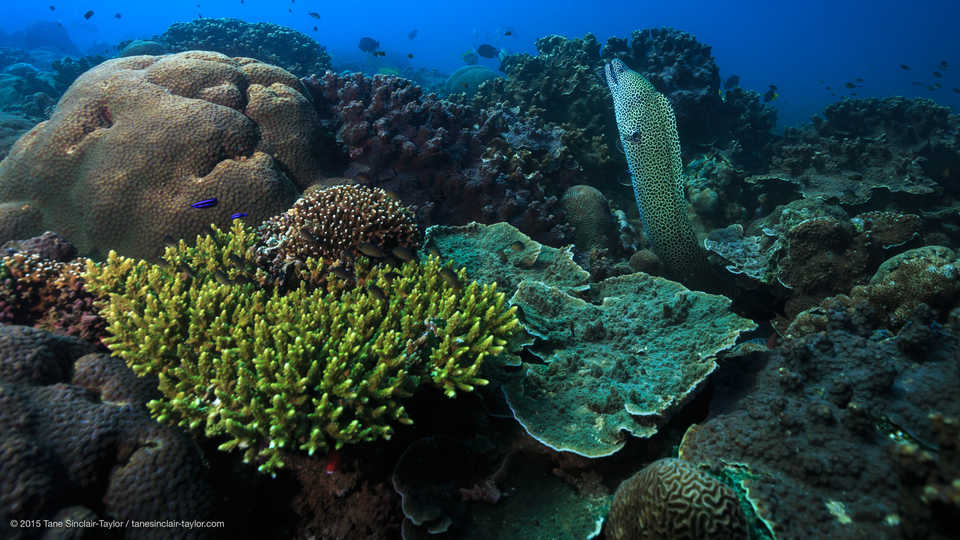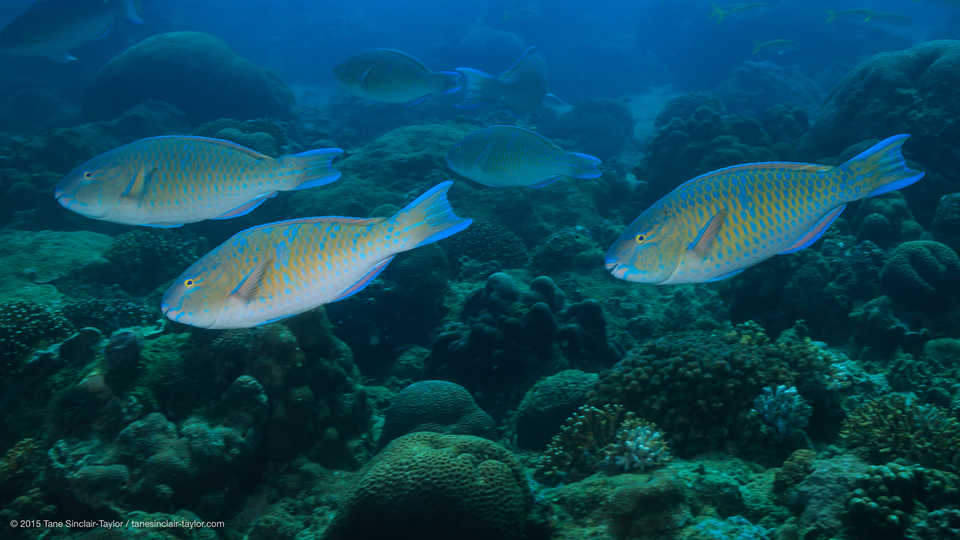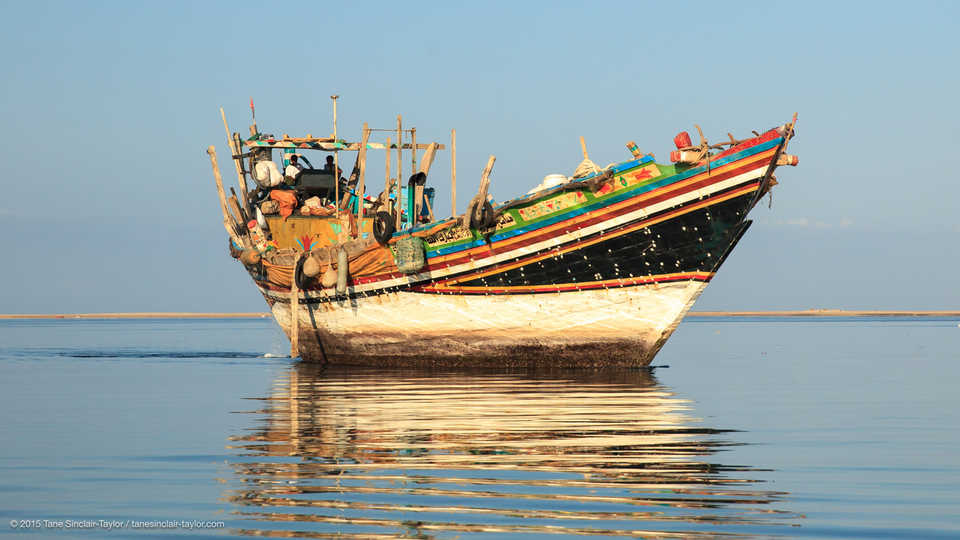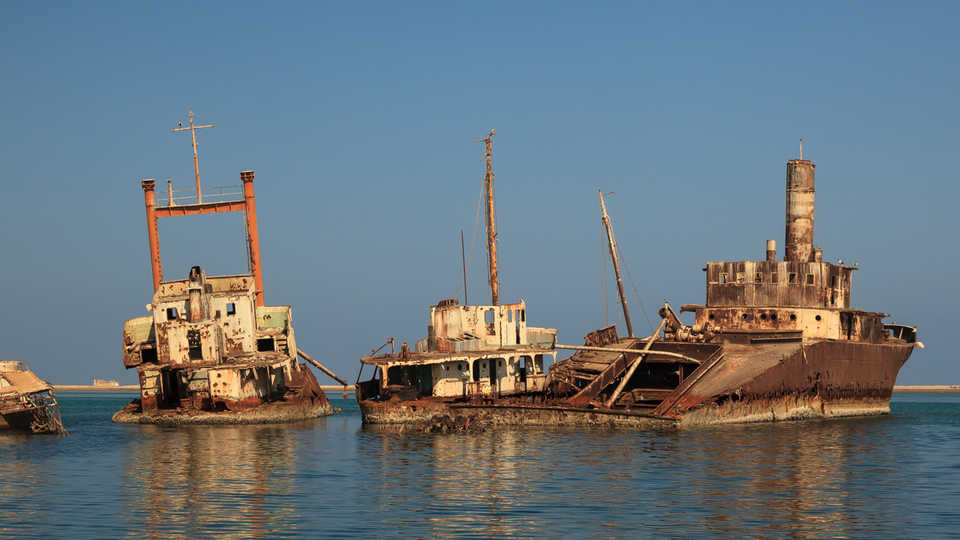The mood of the deep…in the shallows A guest blog by Dr. Joseph DiBattista with photos by Tane Sinclair-Taylor
Field expedition funded by the National Geographic Society Committee for Research and Exploration
The next morning we transit to a private rock-wall jetty ten kilometers down the desolate shoreline. We greet a crew of Somalians who are extending the boat slip by launching rocks and fossilized coral back into the sea by hand. Our gear and boat is in order and so we set off for the first dive accompanied by two armed guards. We understand that the boat driver knows a sizeable reef, but after two hours of navigation we encounter only sand, and continue to transit; the anticipation is unbearable. We have a difficult task ahead of us because few surveys have been conducted on this coast, and we are reliant on a 20 year old biodiversity assessment sponsored by the IUCN Somali Natural Resources Management Programme (Schleyer 1999). The habitat descriptions in this report are detailed, but the focus is on cetaceans, and the fish counts and species identifications are sparse and incomplete. We are here to build on this work and apply newer genetic barcoding methods to provide the Somaliland Ministry of Fisheries, for the first time, with baseline biodiversity assessments and DNA vouchers for their reef fishes, whilst expanding our knowledge of reef fish evolution in the Red Sea and greater Arabian Sea.
We finally get a GPS hit based on a site surveyed 20 years ago by Schleyer and his team, although at this point we are 25 nautical miles down the coast from the jetty. Undulating sand dunes bleed into raised fossilized sea beds along the shore. The coast guard boys struggle to pick up a signal on their cell phones. A smattering of Somali fishing boats sit on the rocky point servicing their sprawling drift nets. After one final check of our dive gear and air quality in our tanks we descend into the water. The reef structure is patchy but significant. Areas of healthy coral host exceedingly high fish biomass. Based on our surveys elsewhere, we immediately recognize that these reefs are different from the reefs of Djibouti, Oman, and even Socotra, a group of islands sitting 130 kilometers off the Horn of Africa. We note relatively more Indian Ocean species here than at Socotra, but the fish community is less diverse, probably a function of the shallow, sandy shelf that extends for miles. Many of the endemic fishes unique to the Red Sea and Gulf of Aden are present. As we clamber back on the boat, we prattle on about what we have seen and begin to set a course for the following day.
The adrenaline wears off 30 minutes into our long journey back, and a few of us begin to nod off with the passing of the uniform coastline. We hardly notice a pod of spinner dolphins (Stenella longirostris) playfully tossing and turning only meters off the bow. As we round the corner of Berbera Port, where a crumbling lighthouse stands as a lone sentry for this shipping lane, we spot dozens of degraded hulls poking out of the oily water adjacent to the channel. Our driver points out what must be a 100 meter long container ship standing askew, high and dry, with wrought iron and sheet metal charred from an intense fire five years previous. We know Berbera was once a thriving fishing town and the center of maritime trade between the Horn of Africa and the Middle East, but it has clearly since diminished in the shadow of much larger ports in neighboring Djibouti. As the driver veers closer to another wreck the engine sputters and falls silent, we look back and he appears to be fumbling with the fuel tank. We are 50 meters from a flotilla of empty coast guard vessels, most of them weather-beaten plastic hulks without engines or seats. A few minutes of screaming in the Somali language brings a small tender out with a spare can of fuel. Once at the harbor, we bid farewell to our security unit and nose our boat up to the main jetty amid a cluster of other fishing boats. A small crowd of people gathers, staring intently at the foreign crew and cargo. We exchange pleasantries and a few minutes later our transport arrives to bring us back to the hotel. A safe return signals the end of a successful day.
The next morning we wake up to the cacophonous call to prayer, each muezzin and mosque springing to life at slightly different times. This habitual schedule of worship, and notable lack of alcohol on the menu at our hotel, reminds us that Somaliland is very much a Muslim country. Islam is the state religion and there is a strict observance of the principles of Sharia law, although most women do not hide their faces. Despite a global rise in tension between Muslims and non-Muslims, we are not concerned. Everyone we have met has been friendly, and inevitably curious about where we come from and what we are doing here. We meet Somali men that have spent time in Norway, Italy, Australia, and even California. We have yet to see roving mobs of radicalized youth armed with sticks, knives, or more sinister weapons chanting “Death to America”. When locals find out that one of our crew members hails from Brazil, the conversation turns passionately to their favorite football teams. The people of Somaliland reveal a fierce sense of pride in their country, and a warmth and optimism despite having seen so much misery. These people are driven to rebuild, but still recognize that they face significant challenges.
Our second day of diving comes with surprises above and below the waterline. We focus on a shallow site thick with macroalgae and another dominated by Porites and Montipora corals. Both “reefs” are only a few hundred meters from our launching point, and both are highly turbid after the prevailing swell has stirred up the sand. This time we collect several specimens of reef fish destined for the California Academy of Sciences, where they will be carefully vouchered and freely available for exchange and study among the scientific community. A tissue voucher taken from each specimen also means that we can genetically compare these species with those sampled elsewhere, and perhaps uncover hidden evolutionary lineages and new biodiversity in the Somaliland region.
The biggest discoveries of the day are deep water reef fishes that we find between two and eight meters depth, seemingly out of place. This can be caused by limited available habitat via a process known as niche compression, where deep water species, through a lack of preferred habitat, are forced into the shallows to compete with closely-related species. A good example is the butterflyfish genus Heniochus, where two species that we recorded in Somaliland are elsewhere partitioned into deep and shallow niches. Here, both are found shallow, which invokes the possibility of hybridization. We also recorded the co-occurrence of other closely-related species of butterflyfish Chaetodon fasciatus and Chaetodon lunula, a Red Sea to Gulf of Aden endemic and an Indo-Pacific species, respectively, that could interbreed given the opportunity. Indeed, Somaliland is the first place in the world where we have seen these two butterflyfish species coexist, with the Indo-Pacific species being rare and the endemic relatively common.
When hauling the anchor to head home, one of the coast guard soldiers absently waves his rifle to and fro. We dip and dive to avoid its trajectory, but soon notice the muzzle is eroded and the barrel stuffed with an oily brown rag. This discovery makes us question the authenticity of these weapons and the ability of the men holding them. A bit of digging reveals that the Somaliland Coast Guard, often referred to as the Navy, has had some success at curbing both piracy and illegal fishing within their waters despite a crippling lack of functional equipment, formal training, and attendant meagre wages. We still feel safer with these men on board, which presents a menacing deterrent to opportunistic crime, but now, more than ever, we beseech the heavens for an uneventful end to the trip.
Next our adventure continues with more diving and an exciting day in Hargeisa. Stay tuned!
